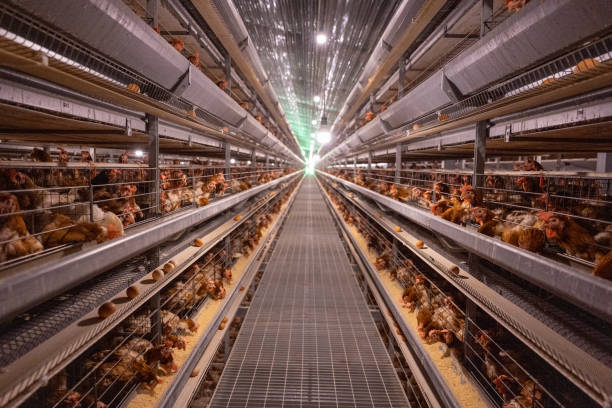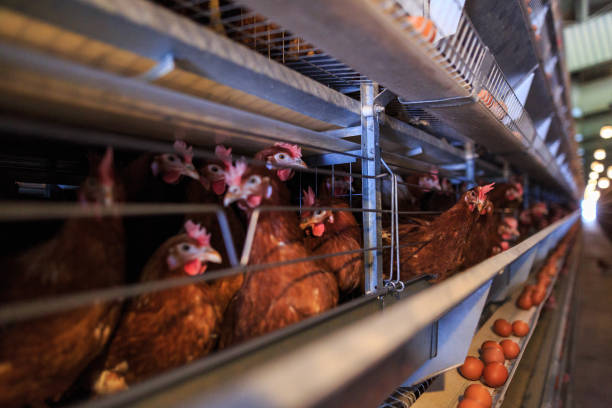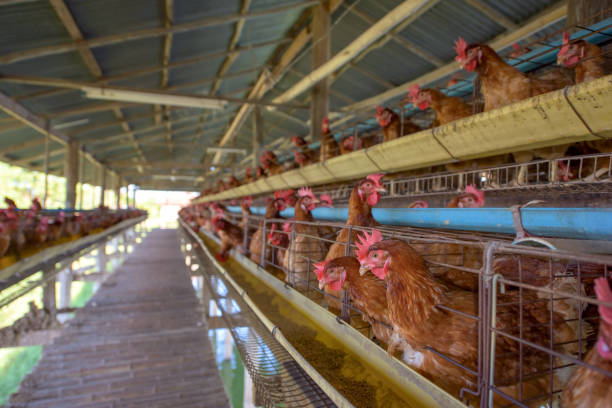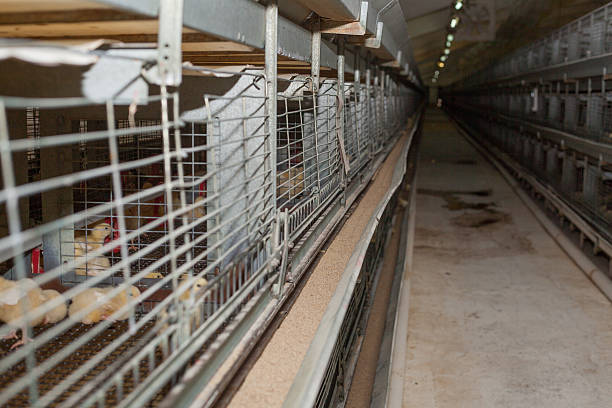
Automatic Broiler Cage Systems for 60K Birds
Automatic Broiler Cage Systems for 60K Birds
Raising 60,000 broilers is no small operation — it’s a serious agricultural venture that demands smart planning, efficient space use, and reliable automation. That’s where automatic broiler cage systems come in. At Zhengzhou Livi Machinery, we’ve designed and delivered turnkey cage solutions for farms of this scale across Asia, Africa, and Eastern Europe. Today, more and more modern poultry farmers are shifting from traditional floor-raising methods to fully automated cage systems — not just for space savings, but for better growth rates, lower mortality, and far more manageable operations.
An automatic broiler cage system for 60,000 birds isn’t a one-size-fits-all setup. It’s a carefully engineered solution based on your farm layout, local climate, labor availability, and future expansion plans. From feeding and drinking systems to manure removal, ventilation, and even lighting control — every component is integrated for seamless daily operation. In this article, we’ll walk you through the core benefits, technical setup, and real-world performance of such a large-scale automated system — so you can make smarter decisions for your poultry business.

Why Switch to Automated Broiler Cages?
Let’s start with the big question: Why bother switching to cages when floor broiler farming has been around for decades? The truth is, floor systems may seem simple at first glance, but they come with hidden challenges — higher disease risk, uneven growth, labor intensity, and massive bedding costs. On a 60K-bird farm, these drawbacks multiply quickly.
Automated cage systems solve most of these issues. By lifting the birds off the ground, you dramatically reduce contact with waste and damp litter — two of the biggest contributors to footpad dermatitis and bacterial infections like E. coli or coccidiosis. Healthier birds grow faster and convert feed more efficiently. Farmers consistently report a 10–15% improvement in FCR (Feed Conversion Ratio) after switching from floor to cage systems.
Then there’s labor. With floor rearing, you need multiple workers to clean houses, manage litter, refill feeders, and monitor bird health. In an automatic cage setup, most tasks run on schedule. Feed is delivered evenly via chain or auger lines. Drinking water flows through nipple systems that self-regulate. Waste drops through mesh floors into conveyor belts or collection pits, removing it without manual scraping. One operator can easily manage the entire cycle — from day-old chicks all the way to market weight — using a central control panel.
And don’t forget scalability. If your current 60K operation performs well, expanding to 80K or 100K becomes far easier with modular cages and standardized automation. This kind of flexibility gives commercial producers the edge in competitive markets.
Design and Layout for a 60K-Bird Operation
Now let’s get into the actual design. A typical automated broiler cage system for 60,000 birds usually works best in a building measuring around 120m x 24m (about 2,880 sqm). The cages are arranged in multiple tiers — commonly 3 or 4 levels high — maximizing vertical space without overcrowding. Each tier includes individual compartments that can hold 8–10 birds depending on age and breed. For a heavy broiler like Ross 308, you’d allocate about 0.067 sqm per bird at final weight.
The layout is typically divided into rows of A-frame or H-type cages running parallel along the length of the house. Between every two or three rows, there’s a service aisle for monitoring, vaccination, or emergency access. The feeding system — either a chain-driven trough or tube-based auger — runs continuously along each tier. These are connected to an automatic silo that refills every few hours based on timer or weight sensors.
Water systems are equally important. We use stainless steel nipple drinkers on each cage section, paired with pressure regulators and filters to ensure clean, consistent flow. Automatic flushing valves help prevent biofilm buildup — critical for preventing disease outbreaks. Some advanced setups even include medication dosing units that inject health supplements directly into the water line.
Manure management is another standout feature. Instead of accumulating below the cage, droppings fall onto slatted trays or conveyor belts that transport them out of the house daily. This keeps ammonia levels low and air quality stable — vital for respiratory health in such a dense population. Some customers install biogas digesters or composting units to reuse manure as organic fertilizer or energy source, adding extra value to their operation.
Ventilation plays a huge role too. High-density housing needs excellent airflow to manage heat, humidity, and gas concentration. Our standard setup includes tunnel ventilation with exhaust fans on one end and evaporative cooling pads on the other. Sensors monitor temperature and CO₂ levels, automatically adjusting fan speed and pad operation. In colder climates, we recommend adding recirculation ducts and supplemental heaters during chick-rearing phase.
All these systems are controlled by a central PLC or touchscreen controller, which allows remote monitoring via smartphone or tablet. You’ll get alerts if something goes wrong — say, a blocked feeder line or failed pump — so problems get fixed before they become costly.
Real-World Results and ROI
So how does all this tech translate into real-world gains? Let’s look at a recent project in Nigeria where a client upgraded from two open-sided sheds housing 30K floor broilers each, to one modern poultry house with an automatic 60K broiler cage system.
Within six months, he reported several wins:
Mortality dropped from 12% to under 6%
Average daily gain improved by 8 grams per bird
Labor costs cut by nearly 70% — from 15 part-time staff to just 4 full-time technicians
Feeding waste reduced by over 20% thanks to precise portion control
House turnover time shortened from 14 days to just 7 days due to faster cleaning
With electricity and water consumption slightly increased from automation, the net profit margin still rose by nearly 22% per flock cycle. Payback time on the initial investment? Around 2.3 years — impressive for agribusiness infrastructure.
Another farmer in Vietnam added egg production cages on the same farm later, repurposing our modular design to switch between broilers and layers seasonally. The adaptability of our system made that transition smooth and cost-effective.
These aren’t isolated cases. We’ve seen similar results across different regions — because healthy environments and consistent automation simply lead to healthier birds and steadier income.
Is a 60K Automatic Broiler Cage System Right for You?
If you’re currently running smaller batches or floor systems, stepping up to 60,000 birds in automated cages might feel daunting — but it doesn’t have to be. At Livi Machinery, we handle everything from site assessment and engineering drawings to installation training and after-sales support. Whether you’re starting fresh or upgrading existing facilities, we tailor the system to your local conditions.
Our cages are built from galvanized steel with anti-corrosion coating, ensuring over 15 years of service life even in humid tropical climates. All electrical components meet IP55 standards for dust and moisture resistance. And because we manufacture in-house, we keep prices competitive while maintaining strict quality control — inspected at every stage.
What’s more, we offer flexible configurations. Maybe you want a partially automated setup first — auto-feeders but manual manure removal — then upgrade later. Or perhaps you need a mobile cage version for temporary structures. We work with your budget and timeline.
Ready to explore how a 60K automatic broiler cage system can transform your poultry business? Share your farm details — size, location, target breed, and production goals — and we’ll send you a free customized quote with full 3D layout, equipment list, and estimated ROI analysis. Just drop us a message, and let’s build your next-generation poultry house together.
Frequently Asked Questions
What is the lifespan of an automatic broiler cage system?
Our cages are made from heavy-duty galvanized steel and typically last 15 to 20 years with regular maintenance. Motors, feed lines, and controllers may need replacement every 5–7 years depending on usage.
Can I retrofit automation into my existing poultry house?
Yes, in many cases. As long as the structure is solid and layout permits, we can install feeding, watering, and manure systems into older buildings. We’ll assess your site first to confirm feasibility.
How much space do I need for 60,000 broilers in cages?
You’ll need approximately 2,800–3,000 square meters of indoor space, including room for aisles, machinery, and ventilation units. We provide exact floor plans based on your land dimensions.
Are these systems suitable for hot or cold climates?
Absolutely. We customize ventilation and heating/cooling options based on your region. Tropical farms get enhanced cooling; cold areas receive insulated walls and heating support.

Do I still need workers if everything is automated?

Yes, but fewer. You’ll need 2–4 trained staff to monitor systems, check bird health, perform minor maintenance, and manage loading/unloading. Automation reduces physical labor, not supervision.
Can I integrate the system with solar power?
Definitely. Many of our clients combine solar panels with battery backups to run motors and controllers, reducing long-term electricity costs — especially useful in rural areas with unstable grids.
How often should I clean the cages?
The manure belts remove waste daily, so major cleaning is only needed between flocks — about once every 6–7 weeks. Quick flush-down with pressurized water and eco-friendly disinfectant is sufficient.
What breeds work best in automated cages?
Fast-growing hybrids like Cobb 500, Ross 308, or Hubbard are ideal. These breeds adapt well to cage environments and show clear improvements in feed efficiency and uniformity.
Can I start with 30K and expand later?
Of course. Our modular design lets you begin with half capacity and add more cages and automation when ready. This helps manage upfront investment.
How do I get a quote or technical drawing?
Simply contact us with your farm details — location, available space, budget range, and production goals. Within 48 hours, you’ll receive a personalized package including layout, specs, pricing, and support options.
